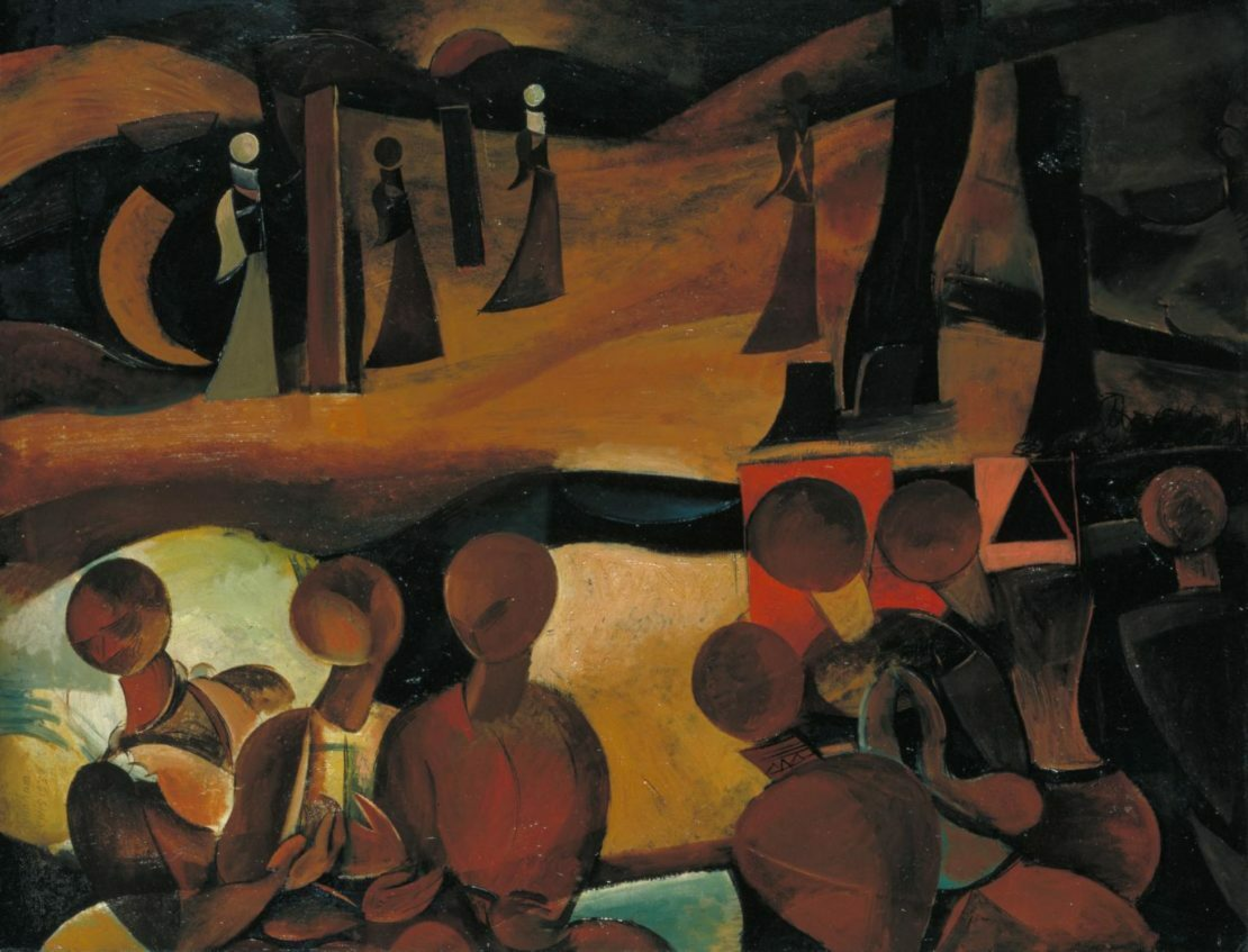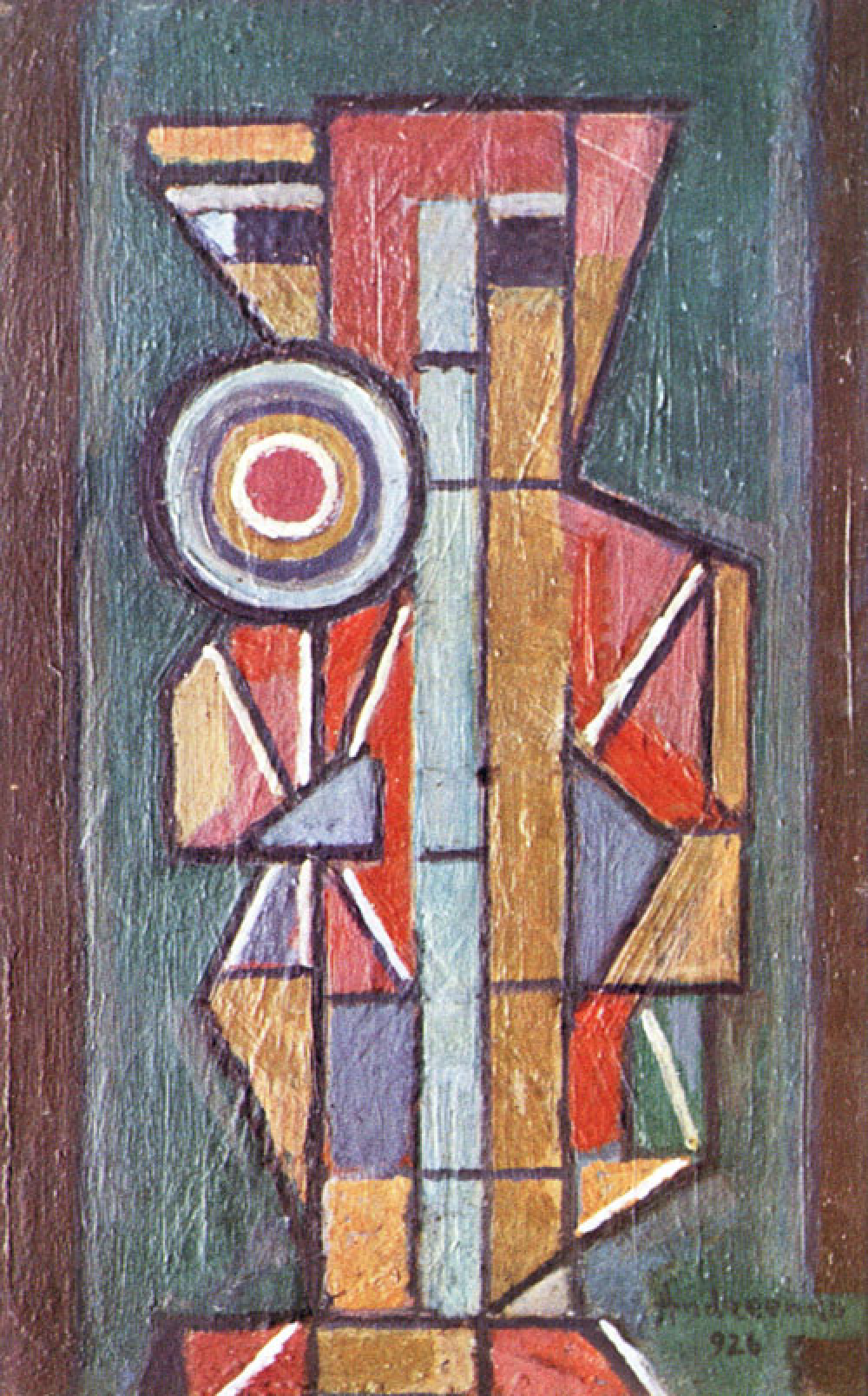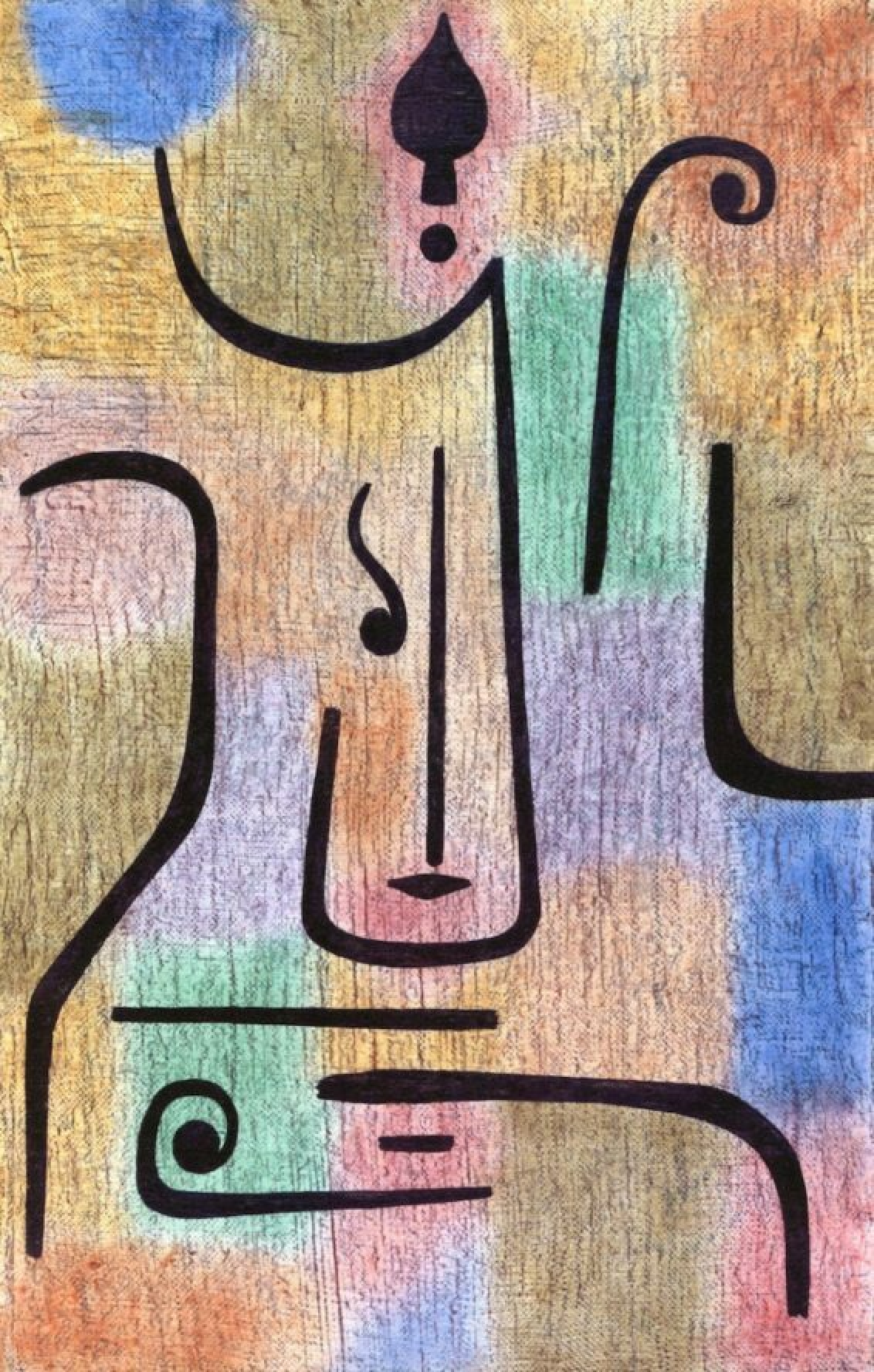SupremePunk #102

Non-objective
This Punk is inspired by the CryptoPunk #8977 and works of Percy Wyndham Lewis. He was the largest English figure of modernism, played a prominent role both in the visual arts and in fiction. He is best known as the founder and main representative of Vorticism– a specific branch of futurism in painting that went quite far beyond its borders. Despite the general methods, the idea of this English avant-garde movement is not in glorifying the mechanization of society, but in its harmful influence.

Percy Wyndham Lewis — The Red Scene, 1933
The inspiration for Punk was his painting "The Red Scene". With other rather sinister, more often surreal paintings by Lewis, the work connects the concepts of immortality - a reflection on the heavenly (eternal) and underground (perishable) worlds. The theme that fascinated Lewis dictated the change of palette: red-brown "underground" colors predominate here. The lines have also changed a lot, becoming generally rounded, smooth. The artist himself said about this period: "I have changed and am between realistic fantasies and semi-abstraction." The painting "Red Stage" was the first work of the master, which was acquired by the public gallery in 1938.
The overall composition of SupremePunk surreally falls apart, which shows the artist's reflections on immortality. As on the canvas of Percy Lewis, the colors of the painting are red and brown, they argue with each other and each of them tries to overcome each other. But despite the feeling of instability of the picture, there is order and strength in it. The picture also shows the state of fragmentation and depersonalization. The image of a person who is trying to find his "I" and reassemble himself. The white background of the painting symbolizes a blank sheet and idyll.

Mikhail Andrienko-Nechitailo — Character, 1926
A similar image of a fragmented person can be found in the painting by Mikhail Andrienko-Nechitailo "Character". It depicts a fictional character who, at first glance, is monumental and stable, but this monumentality is fragmented into multi-colored triangles and rectangles that are out of harmony with each other. Schematicity in the image of the human image is the most successful way to convey the general emotional state and problems of a person. Psychologically, the viewer of the picture begins to create associative solutions based on the overall composition, color scheme and small details. The artist Paul Klee used a similar technique in his works.

Paul Klee — Archangel, 1939
Paul Klee is a Swiss and German painter, graphic artist, art theorist, one of the largest figures of the avant-garde. In the early painting "Archangel" Klee shows the unfulfilled dreams of becoming a composer and musician. He believed that he could not become outstanding, since all the most outstanding works had already been created by Bach and Mozart. The theme of craving for music is shown through smooth minimalistic lines that resemble a human face and musical instruments at the same time with their contour.
The general impression of the picture in a person can cause various thoughts about their own emotional state and dreams. The artist of this painting successfully combines the techniques of the avant-garde, depicting an interesting psychological portrait that is quite easy to read and perceive.

Buy

Gallery:
CryptoPunk #8977 that has been taken as a base

Your transaction is in progress

You have connected to the wrong network

Transaction is successful!


